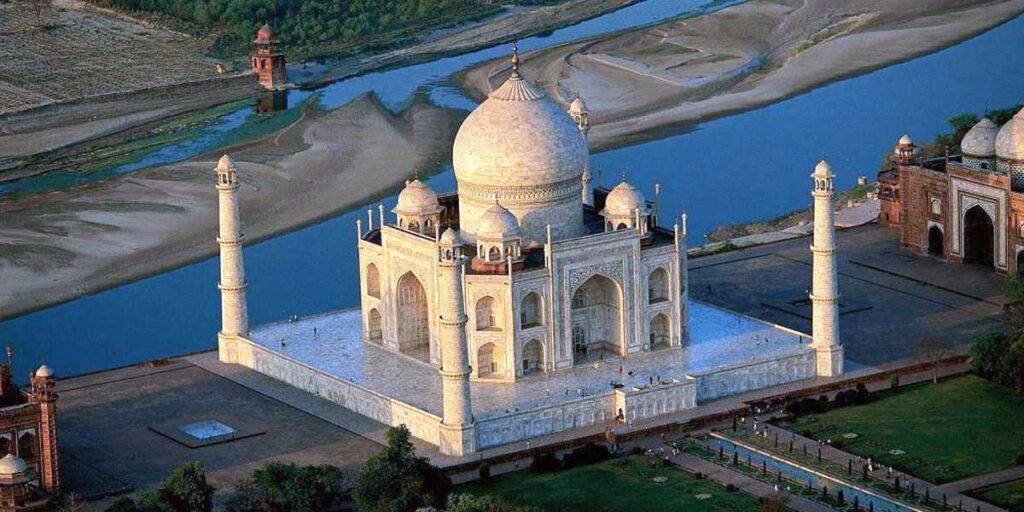Taj Mahal, one of the most visited monuments in the world was commissioned by the fifth Mughal ruler Shah Jahan is situated in Agra on the bank of the river Yamuna. Taj Mahal architecture was inspired by many monuments of India as well as overseas. Before constructing this monument, Shah Jahan set a panel of sub-architects who belonged to different countries and had expertise in their respective arena. One thing is very famous about Shah Jahan who had great knowledge about architecture, so under his supervision, the construction of this monument was executed. Many monuments were visited and studied by sub architects to collect the data so that the execution of the engineering could be done with the utmost care and flawlessly. This work enabled them to create a unique piece of art.
The Blue Print
The Tomb of Itmad-UD Daulah was commissioned by a lady, whose name was Noor Jahan daughter of Mirza Gyas who used to be prime minister of Jahangir’s tenure. This family came from Isphan, the city of Iran. Her father got a job in the court of Akbar, later on, her daughter married the fourth Mughal ruler Jahangir. This is a mausoleum where her immediate family members were buried. Tomb of Itimad-Ud-Daulah is so appealing monument the visitors cannot take their eyes off unless their inner soul gets satisfied. The outer decoration is done with white marble and the inner part is decorated with paintings. The inlaid, as well as tessellated works are executed in a perfect manner. The layout of the garden is on the basis of the char Bagh concept. In order to maintain symmetry, it has four entry gates, but three out of four are dummy gates. During the Tour, this monument should be a part of sightseeing.
Humayun’s Tomb
Humayun’s tomb was commissioned by chief consort Hamida Banu Begum in the memory of her husband, later on, this monument became the necropolis of the Mughal dynasty. The construction work of this monument was started in 1565 and ended in 1572. Many Mughal rulers or princes were buried there. The chief architect of this monument belonged to Iran therefore; the influence of Persian architecture can be seen on this monument. The elevation, as well as the layout of the garden, has been taken from here.

Gol Gumaj of Bijapur
Gol Gumaj of Bijapur is one of the largest domes in India, designed by Persian architect Dabulk Yakoot. The diameter of its dome is around 44 meter and the height of this monument is around 51 meters was built in 1626. This monument is without a pillar to give support to its huge structure that is one of the most interesting facts of this monument. Gol Gumaz is the epitome of architectural fineness. This impeccable monument is known for its indo-Islamic architecture and getting its fame far and wide. This monument is dedicated to Mohammed Adil Shah who was buried there. When you enter this monument, you find the whispering gallery. If you whisper in this gallery, your sound will be echoed. The architecture of Taj Mahal got an idea from here for four minarets.
Po-I-Kalyan Mosque, Bukhara
It is used to be a part of the silk route that would connect to Europe. Bukhara is a very ancient city that houses many monuments that are related to different religions. During the war, in 1127 AD, this city was demolished and rampaged. Bibi Khanum mosque is one of the leading monuments of this city which has given arabesque as well as Iwan to the Taj Mahal. It not only influenced the Taj Mahal but also other monuments as well like chini ka rauza and many more.
Taj Mahal, the symbol of undying love of king for his queen and is final resting place of this couple. The architecture of this monument is inspired from several monuments.

